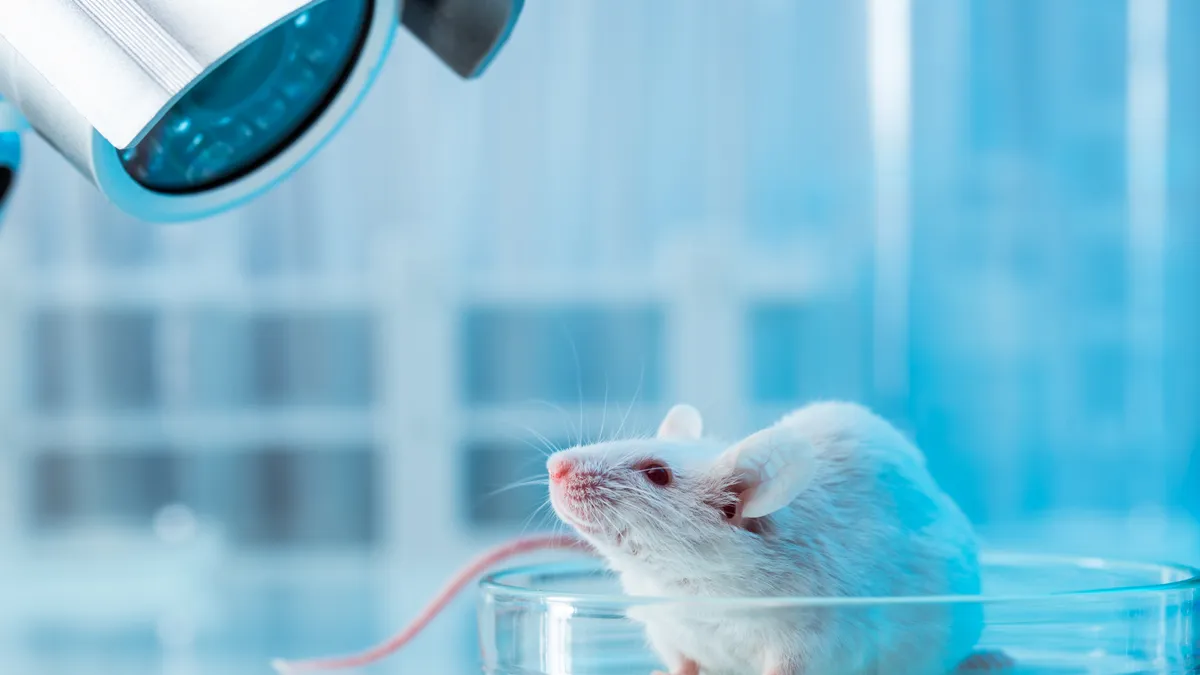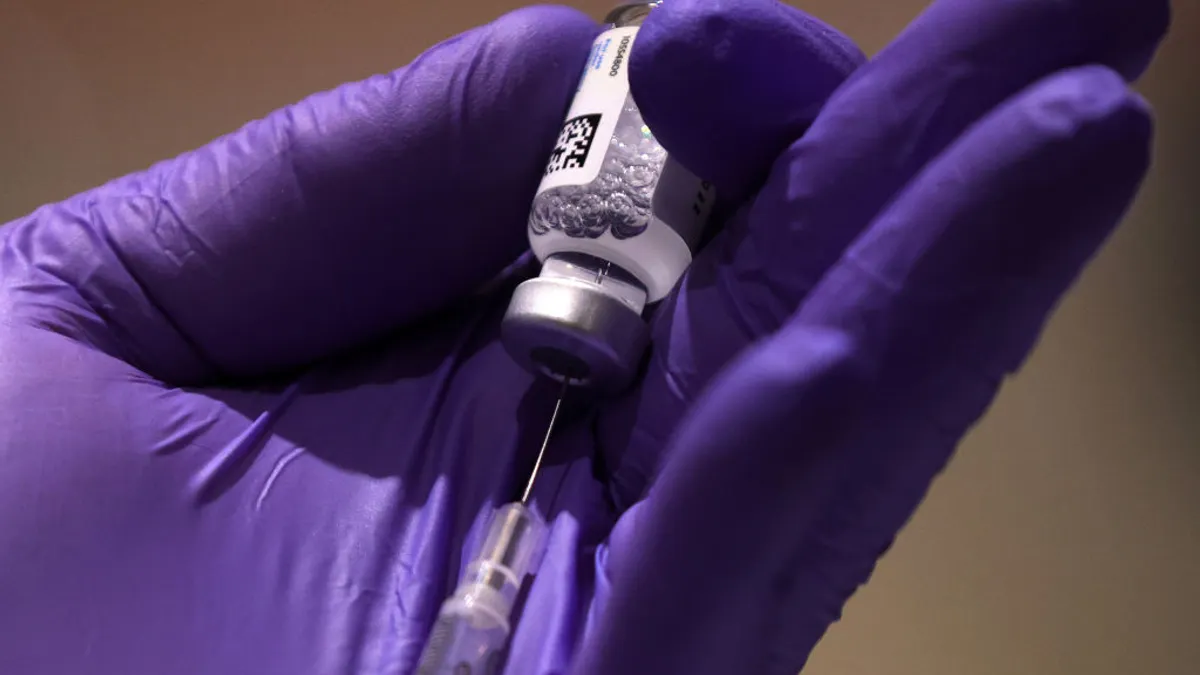No more poison injections, induced tumors, forced obesity or other unspeakable cruelties. Mice everywhere would rejoice if they knew that artificial intelligence might someday take over their jobs in pharmaceutical testing, and that day is coming closer as patient-on-a-chip technology gains speed.
Israel- and Boston-based Quris AI is planning this year to bring its first drug to the clinic that is entirely designed using simulated organs trained by AI for the autism-associated rare disease fragile X syndrome.
The company's technology, called the Bio-AI Clinical Prediction Platform, can someday obfuscate the need for mice in many preclinical trials testing for safety of different compounds, saving time on failed attempts and millions in development costs, Quris' founder and CEO, Isaac Bentwich, says. The platform is a step past organs-on-a-chip, which simulate only one part of the body at a time, because the organs are interconnected in a way that closely resembles reactions in a human patient.
"A patient-on-a-chip is the next-generation technology that has the benefit, like testing on a mouse, of seeing how it affects the system and all the human organs," Bentwich says. "And so when we test drugs on our system, you put the drug on, say, a miniature liver, and what that liver metabolizes is passed on to other organs in the body."
The company is also using the human genome to map particular patient profiles onto their platform, adding a precision medicine context that could help refine future AI-designed drugs. Even among human trials, not every person is the same.
"We went a step beyond and said, not only are we going to test drugs on a patient-on-a-chip, but let's test it on many different patients," Bentwich says. "What if you had 100 different patients on each chip with their own genomics, then test different drugs on that chip? It would actually be like a clinical trial."
With big-time names on the company's scientific advisory board — including Nobel Laureate Aaron Ciechanover and Moderna co-founder Bob Langer — the company, along with others in the AI space, is looking to solve some very old problems in the drug discovery and development process.
"What if you had 100 different patients on each chip with their own genomics, then test different drugs on that chip? It would actually be like a clinical trial."

Isaac Bentwich
Quris AI Founder and CEO
Pharma is listening as AI ascends
Of course, Quris isn't the only name in the pharma AI space: Oxford, UK-based Exscientia is a drug design and discovery company that uses AI to select drug targets. Exscientia has partnered with major drugmakers like Bristol Myers Squibb and Sanofi to bring AI-created molecules to the clinic. Several other private AI players have raked in big funding rounds in the last few years.
Investors and Big Pharma are listening closely, Bentwich says. Quris recently raised a $28 million seed round, which is the largest ever in Israel. The company has also teamed up with Germany's Merck KGaA and the New York Stem Cell Foundation on research initiatives.
"Pharma companies are on the receptive side — they hear the fact that they have a reputation for moving slowly," Bentwich says. "And the financials speak for themselves: they have a system that is now at a 10% yield."
Governing bodies are also pushing the use of AI as a means to minimize animal testing and promote a more efficient pharmaceutical engine. In September last year, EU parliament urged the region to validate alternate testing. Similarly, in the U.S., Congress is reviewing possible legislation to end the mandate for animal testing prior to clinical trials.
"[T]he financials speak for themselves: they have a system that is now at a 10% yield."

Isaac Bentwich
Quris AI Founder and CEO
Astronomical failure rate
The high cost and risk associated with developing a drug is no secret. The average cost of bringing a drug to market is about $2.5 billion, Bentwich says, millions of which are spent in the animal testing phase, not to mention the years it can take before even the first trial begins.
And then there are the heavily skewed odds against success: 90% of drugs that enter clinical trials fail. Bentwich says this is due in part to the fact that what may have worked in animals doesn't translate to humans. The reason might seem somewhat obvious — "mice aren't people," Bentwich says.
"The methodology of developing drugs, on one hand, is progressing tremendously — and at the same time, some of the fundamentals of it are extremely backward and have not changed in 100 years," Bentwich says. "The attempt to know whether it will work safely in the human body hasn't changed fundamentally because it still relies on animal testing."
The astronomical failure rate would be unacceptable in other fields, Bentwich points out. He uses the analogy of an engineer building skyscrapers: "You go to the best engineer in the trade, and they say, we will build 10 skyscrapers and we guarantee nine of them will crumble. We don't know which, but we'll let that happen and then up the rent on the remaining tower. Imagine that — this is where the pharma industry still is."
Among many examples of animal trials failing to translate to success in humans is the development of an HIV/AIDS vaccine. Dozens of trials in primates succeeded in finding what looked like a viable candidate, but for years those vaccines didn't result in human immunity to the virus.
"These processes will take time, but there is big, heavy evidence now showing that mouse models are just not doing a good job in predicting safety and efficacy," Bentwich says.
On the shoulders of giants
For artificial intelligence, data is king — the more data fed into a system, the better it can "learn" and predict what could come next. That's an important part of Quris' platform, but when combining machine learning with a patient-on-a-chip, the system can feed itself.
"One of the powers of AI is that it can take existing data and crunch it and come with additional new insights from the data," Bentwich says. "On the one hand, we're using existing data to train AI, but we're also generating normal data that has never been generated before with these patients-on-a-chip and the nanosensing and genomic complexity."
All of this is cutting-edge computing, and Bentwich admits the cross-disciplinary interdependence of the system is the biggest hurdle.
"Having multiple disciplines is a limitation, a risk and a barrier," Bentwich says. "We've been very careful to rely only on elements that have been well validated before we use them, and hence it isn't risky."
From biology to engineering to microfluidics, nanosensing and microscopy, Quris' platform relies on technology that has been tested in other realms, augmenting and combining them to derive new solutions.
"The technology we're developing is on solid footing," Bentwich says. "Yes, we're doing smaller, faster, more efficient, and putting things together — but we're not pushing the envelope, not trying to invent new biology that is bound to fail."
The scientific process is not one that will immediately change from the mouse model to AI drug development, Bentwich concedes. There is incredible progress being made, but also room for the mouse model to continue in some cases.
"From a science standpoint, one has to be rational and moderate in one's views, not judging for or against an animal model, but for how good it is for the well accepted scientific criteria," Bentwich says. "Part of the resistance is valid science that is looking for something better, and so changing things takes time."




















